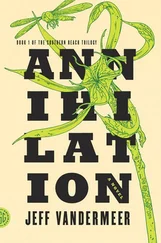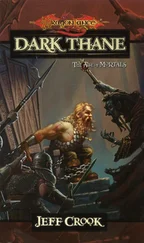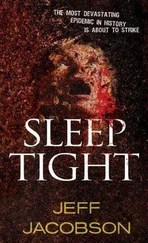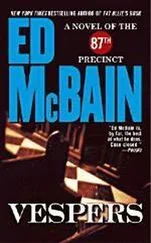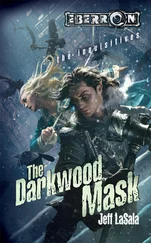Jeff Rovin - Vespers
Здесь есть возможность читать онлайн «Jeff Rovin - Vespers» весь текст электронной книги совершенно бесплатно (целиком полную версию без сокращений). В некоторых случаях можно слушать аудио, скачать через торрент в формате fb2 и присутствует краткое содержание. Жанр: Триллер, на английском языке. Описание произведения, (предисловие) а так же отзывы посетителей доступны на портале библиотеки ЛибКат.
- Название:Vespers
- Автор:
- Жанр:
- Год:неизвестен
- ISBN:нет данных
- Рейтинг книги:5 / 5. Голосов: 1
-
Избранное:Добавить в избранное
- Отзывы:
-
Ваша оценка:
- 100
- 1
- 2
- 3
- 4
- 5
Vespers: краткое содержание, описание и аннотация
Предлагаем к чтению аннотацию, описание, краткое содержание или предисловие (зависит от того, что написал сам автор книги «Vespers»). Если вы не нашли необходимую информацию о книге — напишите в комментариях, мы постараемся отыскать её.
Vicious bat attacks moving southward along the Hudson River prompt Nancy Joyce, a bat scientist who works for the Bronx Zoo, to investigate. When the attacks move into the New York subway system, Manhattan police detective Robert Gentry becomes involved. Joyce and Gentry team up to determine what is causing this unusual behavior. What they discover will keep listeners pinned to their seats and clawing for more.
Vespers — читать онлайн бесплатно полную книгу (весь текст) целиком
Ниже представлен текст книги, разбитый по страницам. Система сохранения места последней прочитанной страницы, позволяет с удобством читать онлайн бесплатно книгу «Vespers», без необходимости каждый раз заново искать на чём Вы остановились. Поставьте закладку, и сможете в любой момент перейти на страницу, на которой закончили чтение.
Интервал:
Закладка:
“They just did a major rat sweep in the north end of Central Park,” Arvids said. “Quiet operation, ethyl chloride-every effective. But a lot of people are still in the field cleaning up the bodies.”
Arvids led Gentry and Joyce to the lowest platform on the east side of the subway terminal. The clerk buzzed them through the service entrance. As they entered and made their way across the crowded ramp, Gentry got the same feeling he’d had earlier-that there was something “off” down here. Subdued. He couldn’t explain why he felt that way.
They walked to the end of the platform. When they reached the far side, Arvids hopped down. Joyce jumped down after him. Gentry sat on the concrete and slid off.
A moment later they were in another world.
Ten
Grand Central Station is the largest train terminal in the world. It covers nearly fifty acres in the heart of Manhattan and is laced with tunnels stacked seven levels deep in places. The lowest of these tunnels lies more than two hundred and fifty feet underground.
Dozens of the tunnels are used for either commuter or subway trains. Most of those are on the top two levels. On the other five levels are dozens more tunnels, many of which were begun but never finished. They were abandoned, sealed off, and forgotten when funds ran out, when walls or ceilings or floors leaked, or when needs or technologies changed. At least half of these dark, damp labyrinths are unmapped. Over the years, homeless people opened many of the tunnels and began living there.
Joyce knew a little of this history from her studies of urban bats and their habitats. But she had never imagined she’d be down here. Like the night, it was fascinating.
Arvids slid a flashlight from a loop in his belt and shined it ahead. They could see about ten feet down the tracks.
“Stay behind me, single file,” he said.
They walked nearly toe-to-heel, with Joyce in the middle. She looked back. Leaving the station was like pushing off in a rowboat.The land sunk away quickly, and the sense of being in a new and dangerous element, on an adventure, quickly took hold. Apart from Arvids’s flashlight and the dull, yellowish bulbs stuck in the ceiling every ten feet or so, there was no illumination down here. No hint of daylight. No fresh air.
“What do we do if a train comes along?” Joyce asked.
Before Arvids could answer, Joyce felt the ground begin to quake. It wasn’t like the gentle rumble a rider felt on the platform. It rattled up her ankles, rolled to her waist, and crawled down her arms. She felt it in her fingertips. A moment later the iron columns and tracks began to brighten and glow to the left. Then everything was washed out in a blast of white light from the headlight of the train. The sound was painfully loud.
Arvids had motioned for them to stand to the right, closer to the wall. They stopped walking and covered their ears as the train lumbered past. It squealed loudly as it stopped at the station. Joyce’s body was still trembling, fine and fuzzy like a tuning fork.
Arvids shouted back through the cottony silence, “What we do is just step aside!”
“I see,” she said.
When the train left the station, the platform was empty and the sense of isolation was even more pronounced. The white-tile wall continued for another few yards. When it ended there was only darkness to the right, to the left, and beyond the glare of the flashlight. Walking here was a little like descending a staircase without looking down.
Gentry leaned close to her ear. “In case you were wondering, you’re nowhere near the third rail.”
“That did cross my mind,” Joyce admitted. “Where is it?”
“Over to the left, underneath the current bar. See it?”
She looked. She craned. She squinted.
“That raised, L-shaped piece outside the running rail,” Gentry said, leaning close and pointing.
“Got it,” she said. “Have you spent a lot of time down here?”
“As a matter of fact, I have,” Gentry said. “When I was on the narcotics squad.”
“You were a narc?” Arvids said. “I didn’t know that.”
“Why did that bring you down into the tunnels?” Joyce asked.
“Dealers from Connecticut used to toss stuff from the trains, just in case cops were waiting for them in the station,” Gentry said. “They had goons down here to pick the stuff up.”
“Man,” Arvids said. “I’m impressed. You were a narc. I don’t see much action here and I’ve been thinking about a change. Narcking, Violent Predator Task Force, Worst-of-the-Worst Task Force-those are the kinds of thing you do toreally test yourself. To do some good, too, but also to see if you’ve got the stuff. You know what I mean.”
“I do. That’s one of the reasons I did it.”
“It’s like when my dad was in the army and he said he wanted to get some combat in,” Arvids went on, “even though he didn’t really. He just wanted to see how he’d do. He ended up in Vietnam, and it turned out he had more steel in him than he thought.”
A second train charged by, its light harsh in the deepening darkness. The train was farther from the station and was moving faster than the first train. This time Joyce didn’t hum when it passed. She rattled.
When the train had receded, Joyce tapped Arvids on the shoulder and stopped. “Would you shine your light up for a second?”
“Sure thing.” Arvids turned his flashlight toward the top of the tunnel.
The ceiling was about twelve feet above them. There were concrete ledges, iron girders, and discoloration from water seepage. There was a lightly metallic odor coming from the damp metal. Beneath it, in the distance, Joyce could already smell the distinctive odor of the guano.
“What are you looking for?” Gentry asked.
“Cockroaches,” she said. “If bats moved in somewhere ahead, the roaches would have moved out. Like at your apartment.”
Arvids shined the flashlight slowly along the ceiling. “I don’t see any, but they travel pretty fast. And they could have gone in about a million different directions. This is a very long tunnel.”
“How long?”
“This particular trunk heads up to the middle of Central Park, which is about two and a half miles north. Then it doubles back and heads southwest to Penn Station.”
“I didn’t realize the two stations were connected,” Joyce said.
“Everythingis connected through these tunnels,” Arvids said. “All the train lines-commuter, subway, everything.”
Joyce felt a cool draft from the left and asked Arvids to shine the light over. About six feet away was a concrete wall with a hole cut in the center. The opening was about two yards up from the ground, a yard across, and nearly a yard tall at its highest point. The edges of the hole were jagged, as though it had been punched out with a hammer.
“What’s that?” Joyce asked.
“It’s probably the work of the tunnel people,” he said.
“The who?”
“The homeless people who live underneath the train tunnels. We had most of them cleared out, but they keep coming back. The tunnel people live on this level, and the mole people are on the lower levels. We think there are about five hundred homeless living down here altogether, but we’re not sure.”
“You’re kidding,” Joyce said. “There are that many homeless people here?”
Arvids nodded. “They’ve got communities with a mayor, teachers-it’s really very organized.”
“Does anyone ever go to them?” Joyce asked. “Help them?”
“We have an outreach program here at the station,” Arvids replied. “But they don’t like intruders. Some of them come up for food and supplies, but most of them never leave the tunnels.”
“And why would they make a hole like this?”
Читать дальшеИнтервал:
Закладка:
Похожие книги на «Vespers»
Представляем Вашему вниманию похожие книги на «Vespers» списком для выбора. Мы отобрали схожую по названию и смыслу литературу в надежде предоставить читателям больше вариантов отыскать новые, интересные, ещё непрочитанные произведения.
Обсуждение, отзывы о книге «Vespers» и просто собственные мнения читателей. Оставьте ваши комментарии, напишите, что Вы думаете о произведении, его смысле или главных героях. Укажите что конкретно понравилось, а что нет, и почему Вы так считаете.

